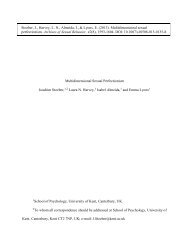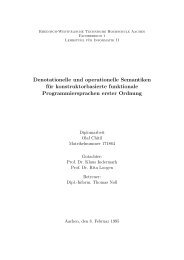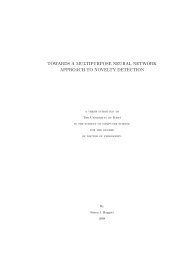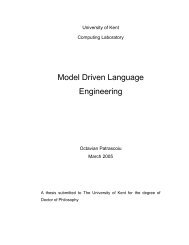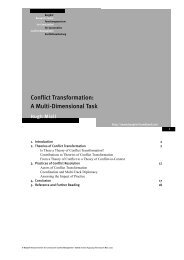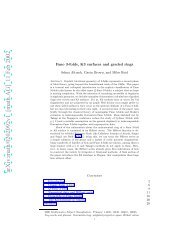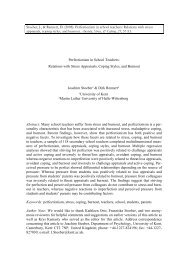Download (640Kb) - University of Kent
Download (640Kb) - University of Kent
Download (640Kb) - University of Kent
You also want an ePaper? Increase the reach of your titles
YUMPU automatically turns print PDFs into web optimized ePapers that Google loves.
Fig.13 Heinrich Tessenow,The Institute for Rhythmic Education, Hellerau.<br />
Ground and First Floor Plans (1911) and measured drawings (1938).<br />
Werner Durth, (ed.), Entwurf zur Moderne Hellerau: Stand Ort Bestimmung (Stuttgart: DVA, 1996), p.38.<br />
The performance space is where Tessenow had so much to learn from Dalcroze’s<br />
technical and artistic advisors, Appia and von Salzmann. Appia insisted on a space<br />
which would do away with the usual distinction between performers and audience: in<br />
other words, the proscenium opening separating the two zones had to be abolished.<br />
Instead, we find ourselves in a simple rectangular box. In its ‘school’ mode the students<br />
felt themselves to be at the centre <strong>of</strong> a democratic space, and when there were staged<br />
performances they felt they shared this space with the audience, as if the public had<br />
been specially invited in to participate in their ‘mystic’ rites. Instead <strong>of</strong> elaborately painted<br />
scenery – flats flown in from a tall fly-tower above, and realistic props - Appia designed<br />
14



